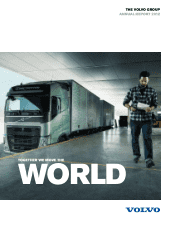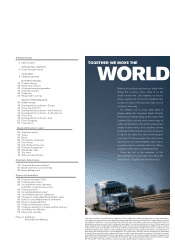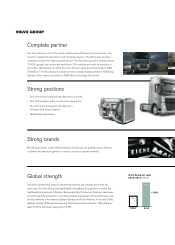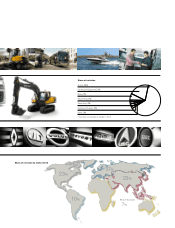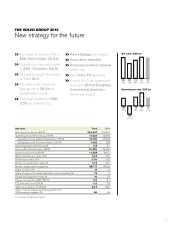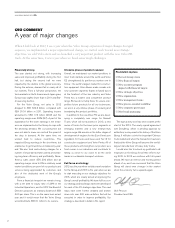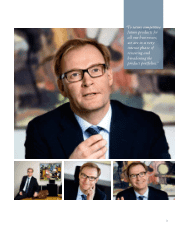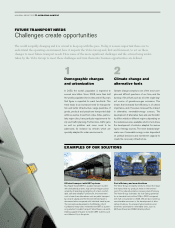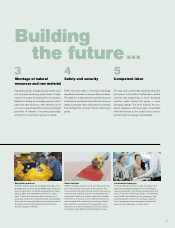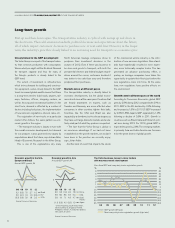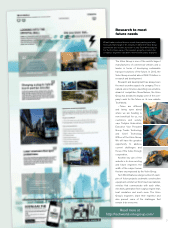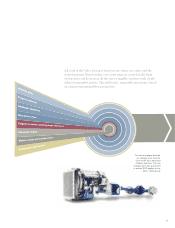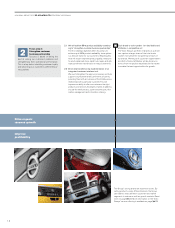Volvo 2012 Annual Report Download - page 8
Download and view the complete annual report
Please find page 8 of the 2012 Volvo annual report below. You can navigate through the pages in the report by either clicking on the pages listed below, or by using the keyword search tool below to find specific information within the annual report.
EXAMPLES OF OUR SOLUTIONS
Efficient transport with BRT systems
Bus Rapid Transit (BRT) is a public transport system
with dedicated bus lanes, high service frequency and
simplicity of boarding and alighting. It is fast, comfort-
able, safe and reliable. Furthermore, the investment
cost is lower than alternatives such as public transport
by rail and subway and the environmental impact is
decreased when compared with individual travel by car.
The concept was developed in the Brazilian city of
Curitiba and many cities worldwide view BRT as a prom-
ising solution for public transport. Volvo Buses is a world-
leading supplier of buses to modern BRT systems such
as in Mexico City in the photo.
Fuel efficiency and new drivelines
The Volvo Group constantly strives to reduce the nega-
tive impact that our products have on the environ-
ment. This naturally entails increasing fuel efficiency.
The Volvo Group estimates the fuel-saving potential
for a standard truck will be 15% in 2020 compared
with fuel consumption in 2005. We are also investing
considerable resources in the development of alter-
native drivelines, for example hybrid solutions and
drivelines optimized for renewable fuels, such as
Methane Diesel and DME (dimethyl ether).
1
In 2050, the world’s population is expected to
exceed nine billion. Since 2008, more than half
the world’s population live in cities and in fifty years
that figure is expected to reach two-thirds. This
trend leads to an increased need for transporta-
tion and better infrastructure. Large quantities of
goods, products and people are transported daily
within as well as to and from cities. Cities, particu-
larly major cities, have particular requirements for
city and traffic planning. Furthermore, traffic jams
as well as pollution and noise need to be
addressed, for instance by vehicles which are
specially adapted for urban environments.
Demographic changes
and urbanization
Climate change comprises one of the most com-
plex and difficult questions of our time, and the
burning of fossil fuels such as oil is the single larg-
est source of greenhouse-gas emissions. This
means that increased fuel efficiency is of utmost
importance, and it has also increased the interest
in alternative, renewable-energy sources. The
development of alternative fuels and electromobil-
ity differs widely in different regions depending on
the natural resources available, which in turn drives
the development of vehicles adapted for various
types of energy sources. The move towards large-
scale use of renewable energy is also dependent
on political decisions and investment capacity to
create the necessary infrastructure.
Climate change and
alternative fuels
2
The world is rapidly changing and it is crucial to keep up with the pace. Today, it is more important than ever to
understand the operating environment, how it impacts the Volvo Group and, first and foremost, to act on these
changes to meet future transport needs. Here some of the more significant challenges and the actions being under-
taken by the Volvo Group to meet these challenges and turn them into business opportunities are defined.
A GLOBAL GROUP 2012 OPERATING CONTEXT
FUTURE TRANSPORT NEEDS
Challenges create opportunities
4

